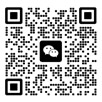正文:References
Arnold, M.B. (1968).
The nature of emotion. Middlesex, England: Penguin.
Ashton, P. T. (1985). Motivation and the teacher's sense of efficacy. In C. Ames & R.
Ames (Eds.),
Research on motivation in education. Vol. 2: The classroom milieu (pp. 141-171). Orlando, FL: Academic Press.
Ashton, P., & Webb, R. (1986).
Making a difference: Teachers' sense of efficacy and student achievement . New York: Longman.
Atkinson, J. W. (1957). Motivational determinants of risktaking behavior.
Psychological Review,
64, 359-372.
Atkinson, J. W., Dembo, T., Festinger, L., & Sears, P. (1964).
An introduction to motivation. Princeton, NJ: Van Nostrand.
Bandura, A., & Webb, R. (1969).
Principles of behavior modification. New York: Holt, Rinehart & Winston.
Bandura, A. (1988). Self-regulation of motivation and action through goal systems. In V. Hamilton, G. H. Bower, & N. H. Frijda (Eds.),
Cognitive perspectives on emotion and motivation (pp. 37-61). Dordrecht, The Netherlands: Kluwer.
Bandura, A. (1989). Social cognitive theory. In R. Vasta, G. H. Bower, & N. H. Frijda (Eds.),
Annals of child development (Vol. 6, pp. 1-60). Greenwich, CT: JAI Press.
Bandura, A. (1997).
Self-efficacy: The exercise of control. New York: Freeman.
Battle, E., Pintrich, P. R., Meece, J., & Wessels, K. (1965). Motivational determinants of academic task persistence.
Journal of Personality and Social Psychology,
2, 209-218.
Battle, E., Pintrich, P. R., Meece, J., & Wessels, K. (1966). Motivational determinants of academic competence.
Journal of Personality and Social Psychology,
4, 634-642.
Blumenfeld, P. C., Pintrich, P. R., Meece, J., & Wessels, K. (1982). The formation and role of self-perceptions of ability in the elementary classroom.
Elementary School Journal,
82, 401-420.
Dunkin, M. J., & Biddle, B. J. (1974).
The study of teaching. New York: Holt, Rinehart & Winston.
Dweck, C. S., & Leggett, E. L. (1988). A social-cognitive approach to motivation and personality.
Psychological Review,
95, 256-273.
Dweck, C. S. (1999).
Self-theories: Their role in motivatio, personality, and development. Philadelphia: Taylor & Francis.
Eccles, J. S., & Wigfield, A. (1995). In the mind of the actor: The structure of adolescents' achievement task values and expectancy-related beliefs.
Personality and Social Psychology Bulletin,
21, 215-225.
Feather, N. (1982).Human values and the prediction of action: An expectancy-valence analysis. In N.T. Feather (Ed.).
Expectations and actions: Expectancy-value models in psychology (pp.263-289).Hillsdale, NJ: Erlbaum.
Feather, N. (1988). Values, valences, and course enrollment: Testing the role of personal values within an expentancy-value framework.
Journal of Educational Psychology,
80, 381-391.
Fiske, S., & Taylor, S. (1991).
Social cognition. New York: McGraw-Hill.
Harter, S. (1985). Competence as a dimension of self-evaluation: Toward a comprehensive model of self-worth. In R. Leahy(Ed.),
The development of the self (pp. 55-121). New York: Academic Press.
Hembree, R., & Leggett, E. L. (1988). Correlates, causes, effects, and treatment of test anxiety.
Review of Educational Research,
58, 47-77.
Hill, K. T., & Wigfield, A. (1984). Test anxiety: A major educational problem and what can be done about it.
Elementary School Journal,
85, 105-126.
James, W. (1892).
The principles of psychology. New York: Henry Holt.
James, W. (1884). What is an emotion?
Mind, 9, 188-205. . (Reprinted in K. Dunlap (Ed.),
The emotions (pp. 11-30). Baltimore, MD: William & Wilkins, 1922.
Lange, C. G. (1885). One leudsbeveegelserb (I.A. Haupt, Trans.). In K. Dunlap (Ed.)
The emotions (pp. 33-90). Baltimore, MD: William & Wilkins. 1922.
Lewin, K. W., Dembo, T., Festinger, L., & Sears, P. (1944). Level of aspiration. In J. McV. Hunt (Ed.).
Personality and the behavioral disorders,
1, 333-378. New York: Ronald Press.
Lewin, K., & Ross, L. (1935).
A dynamic theory of personality: Selected Papers (D.K. Adams & K. E. Zener, Trans. ed.). New York: McGraw-Hill.
Marsh, H. W. (1993). Academic self-concept: Theory, measurement, and research. In J. Suls (Ed.),
Psychological perspectives on the self,
4, 59-98. Hillsdale,NJ: Erlbaum.
Nisbett, R., & Ross, L. (1980).
Human inference: Strategies and shortcomings of social judgement. Englewood Cliffs, NJ: Prentice Hall.
Pavlov, I. P. (1927).
Conditioned reflexes (G.V.Anrep, Trans. ed.). London: Oxford University Press.
Pavlov, I. P. (1928).
Lectures on conditioned reflexes (G.V.Anrep, Trans. ed.). New York: International Publishers.
Pintrich, P. R. (1989). The dynamic interplay of student motivation and cognition in the college classroom. In M. L. Maehr & C. Ames (Eds.),
Advances in motivation and achievement: Motivation-enhancing environments (Vol. 6, pp. 117–160). Greenwich, CT: JAI.
Rosenthal, T. L., & Bandura, A. (1978). Psychological modeling: Theory and prectice. In S. L. Garfield & A. E. Bergin (Eds.),
Handbook of psychotherapy and behavior change: An empirical analysis (2nd ed., pp. 621-658). New York: Wiley. (Reprinted from )
Russell, W. A. (1970).
Milestones in motivation: Contributions to the psychology of drive and purpose. New York: Appleton-Century-Crofts.
Schunk,D.H. (2005). Self-Regulated Learning: The Educational Legacy of Paul R. Pintrich, Educational Psychologist, 40(2), 85-94.
Schunk,D.H.,Pintrich, P.R.,& Meece,J.L.(2008). Motivation in Education: Theory, Research, and Applicatins (3
rd Ed.). New Jersey: Pearson.
Skinner , B. F. (1953).
Science and human behavior. New York: Free Press.
Stipek, D. J. (1996). Motivation and instruction. In D. C. Berliner & R. C. Calfee (Eds.),
Handbook of educational psychology (pp. 85-113). New York: Macmillan.
Thorndike, E. L. (1913).
Educaional psychology: Vol.2. The psychology of learing. New York: Teachers College Press.
Wigfield , A., & Eccles, J. S. (1989 ). Test anxiety in elementary and secondary school students.
Educaional Psychologist,
24, 159-183.
4/4 首页 上一页 2 3 4
 《桂林理工大学学报》
《桂林理工大学学报》 编辑QQ
编辑QQ  编辑联络
编辑联络 

